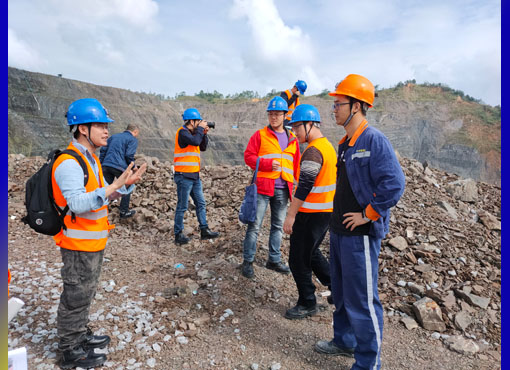In most types of Au deposit, Au occurs as native Au or alloys with other metals. This is because Au is a typical inert element and difficult to form compound with other elements.
However, in Carlin-type Au deposit, an unusual type of Au deposit, Au exists invisibly in pyrite rather than as native Au or alloys. How Au enters the pyrite remains unknown.
A research group led by Prof. SONG Xieyan from the Institute of Geochemistry of the Chinese Academy of Sciences (IGCAS) revealed the evolution of invisible Au in the pyrite from the selected Carlin-type Au deposits in China and USA by combination of Focus Iron Beam (FIB) and Transmission Electron Microscope techniques.
The researchers found that Au was invisible and inhomogeneous in the pyrite at the nanometer scale. No recognizable Au nanoparticles were detected in widespread Au-rich domains. However, a few Au nanoparticles were found in the locations with low Au abundance. These observations suggested that Au was probably mainly incorporated into crystal structure of the pyrite.
In addition, the nanometer-scale microstructures in the pyrite implied that Au-bearing pyrite rims formed during a rapid crystallization process.
The researchers proposed a new model for Au migration and deposition of Carlin-type Au deposits. At the beginning, Au is transported by hydrothermal fluids as complexes with (HS)21- and/or (HS)0. When the fluids pass through the Fe-rich sedimentary rocks, fluid-rock reaction results in decomposition of Au(HS)21- and Au(HS)0 and formation of pyrite (FeS2). Hence, gold is incorporated into crystal structure of the rapid crystallizing pyrite. This explains why Carlin-type Au deposits are always hosted in Fe-rich sedimentary rocks and Au is invisible.
The study was published in Economic Geology on Nov. 30. It was supported by the National Key R&D Program of China, Natural Science Foundation of China, Science and Technology Foundation of Guizhou Province, Open Funding Project of State Key Laboratory for Mineral Deposits Research, Nanjing University, and the Chinese Academy of Sciences "Light of West China" Program.
|

|
|
Researchers in the field (Image by IGCAS) |
Contacts:
LIANG Qinglin; XIE Zhuojun; SONG Xieyan; XIA Yong
Institute of Geochemistry, Chinese Academy of Sciences
Email: liangqinglin@mail.gyig.ac.cn; xiezhuojun@mail.gyig.ac.cn; songxieyan@mail.gyig.ac.cn; xiayong@mail.gyig.ac.cn
(By Prof. SONG Xieyan's group)